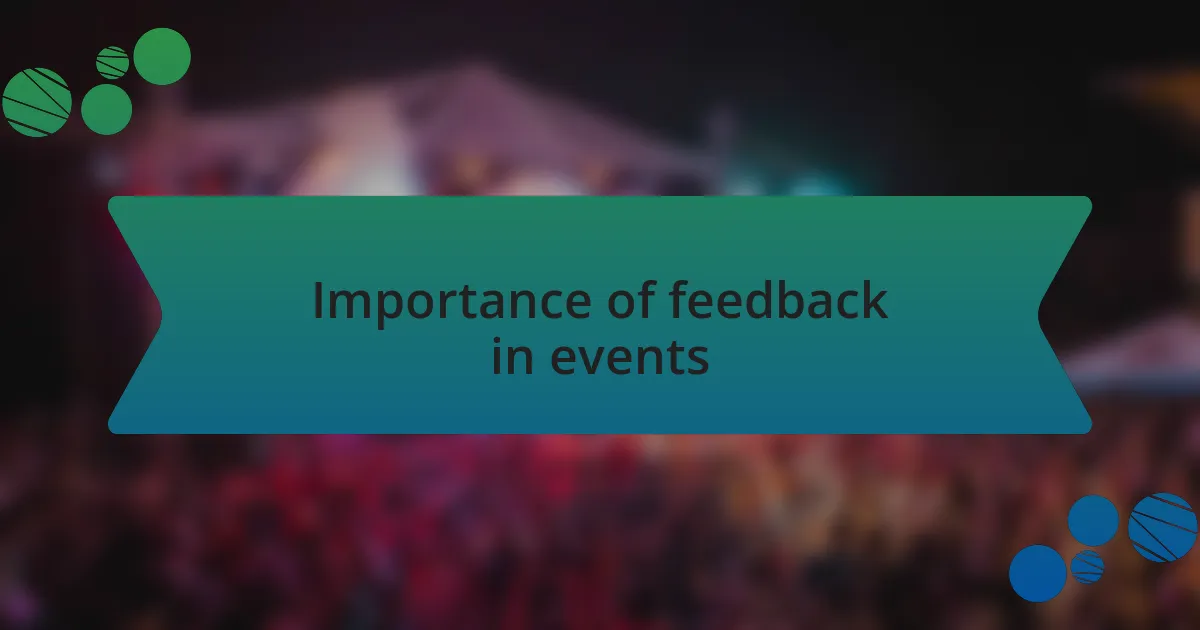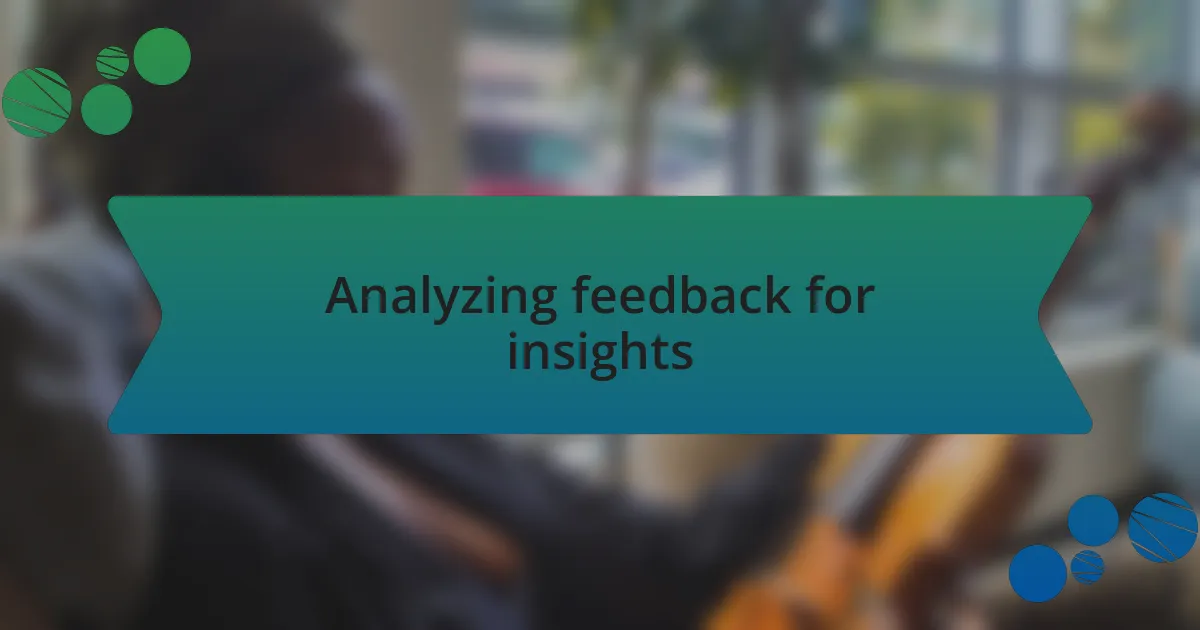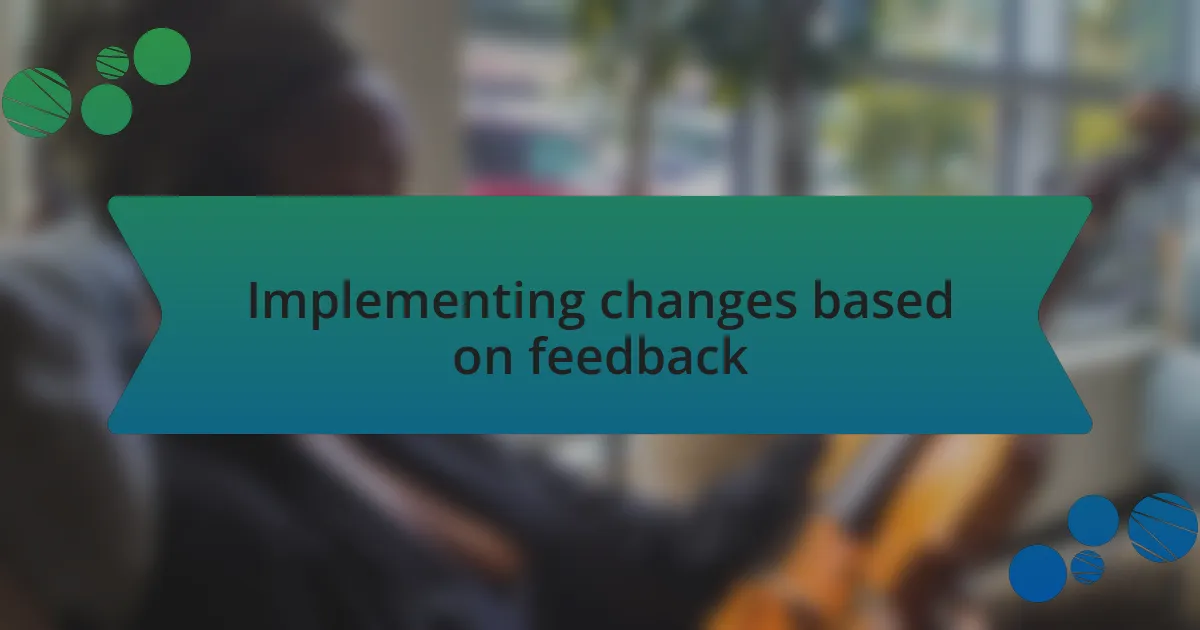Key takeaways:
- Every touchpoint in the attendee journey, from ticket purchase to on-site experiences, significantly impacts emotional connection and overall perception of events.
- Active solicitation and implementation of attendee feedback foster a culture of continuous improvement, enhancing loyalty and anticipation for future events.
- Utilizing both quantitative data and qualitative emotional responses allows organizers to make informed decisions that enrich attendee experiences.
- Transparent communication of improvements based on feedback cultivates trust and transforms attendees into active participants in shaping future events.

Understanding attendee journey
To truly grasp the attendee journey, I often reflect on my own experiences at various electronic music events. Each moment, from ticket purchase to the encore performance, influences how connected I feel to the event. Have you ever noticed how a small detail, like a personalized email or a seamless check-in process, can set the tone for the entire experience?
As I dive deeper into understanding this journey, I recall a festival where the atmosphere changed the minute I entered the venue. It wasn’t just about the music; it was about how the layout, visuals, and even friendly staff made me feel welcomed and part of something special. This connection is critical, as it leaves lasting memories and shapes attendees’ perceptions of the label or event.
Taking a closer look, I realize that every touchpoint along this journey matters. Remember the excitement when discovering new artists or engaging in activities at the event? They don’t just attend; they want to feel part of a community. By understanding these nuances, we can create experiences that resonate on an emotional level, enriching their overall journey.

Importance of feedback in events
Feedback plays a vital role in shaping the experience of attendees at events. I remember attending a festival where we were invited to share our thoughts through quick surveys right after the shows. What struck me was how those simple requests for feedback turned into a dialogue, making me feel valued and heard. It wasn’t just about sharing my opinions; it felt like I was part of a greater community, contributing to something I cared about.
In another instance, I saw how a label took feedback seriously by adjusting set times based on audience preferences. It was fascinating to witness the positive impact of this change. People left the event buzzing, knowing that their voices mattered in influencing future experiences. Have you ever wondered how a small adjustment could elevate an entire event? That’s the kind of responsiveness that builds loyalty and trust.
When organizers actively solicit and implement feedback, it fosters a culture of continuous improvement. I’ve noticed that when I see changes made based on crowd input, my connection to the event deepens. It’s like being part of a living, breathing entity that evolves with each step. Now, don’t you think that makes you anticipate the next event even more?

Gathering feedback from attendees
Gathering feedback from attendees can be as simple as setting up a few strategically placed suggestion boxes or digital platforms. I once attended an electronic music event where they had an app feature for real-time feedback during performances. This made the atmosphere charged with excitement, as I felt my input could directly influence the vibe of the night. Have you ever had that exhilarating feeling when you realize your voice can shape the energy around you?
Creating an easy and approachable way for attendees to share their thoughts is crucial. At one festival, they employed trained staff to engage with participants and ask for their experiences in person. This personal touch made it feel less like a survey and more like a conversation with friends. I could see how attendees perked up, feeling more valued when someone took the time to listen. How often does that happen in large events, where impersonal data collection is the norm?
Lastly, following up on feedback is essential to show that you genuinely care about the attendees’ opinions. After an event, I received a heartfelt message from a label discussing the changes they planned based on attendee input. Knowing they were taking action made me feel connected and enthusiastic about returning to future events. Isn’t it refreshing when organizers don’t just collect feedback but actually transform it into positive changes? This cycle of communication enriches the entire experience for everyone involved.

Analyzing feedback for insights
When it comes to analyzing feedback, looking for patterns can reveal invaluable insights. For example, during one festival, I noticed that many attendees mentioned a desire for more food options. By taking a close look at this feedback collectively, the organizers could pinpoint a clear demand, leading to a vibrant selection of vendors the following year. It’s surprising how a simple aggregation of voices can spark substantial changes, isn’t it?
Digging deeper into qualitative feedback can also illuminate emotional responses that raw data might miss. After an event, I recalled seeing comments that highlighted not just what attendees disliked but also what truly moved them, like an unexpected surprise performance that made the night unforgettable. Understanding these emotional touchpoints allows organizers to create moments that resonate deeply with the audience. Isn’t it fascinating how quantifying feelings can directly enhance the overall experience?
Moreover, utilizing tools such as sentiment analysis can make the feedback process more efficient. I once worked with a team that employed a feedback management system capable of categorizing comments into positive, negative, and neutral sentiments. It was eye-opening how quickly we could identify critical issues, such as sound quality, and turn them into actionable items even before the next event. How often do we overlook the voice of the crowd in favor of numerical ratings, when combining both elements could lead to truly transformative experiences?

Implementing changes based on feedback
Implementing changes based on feedback is where the real magic happens. I remember a moment when we revisited the layout of our stage areas after receiving requests for better sightlines. By adjusting the design, we not only made it easier for attendees to see their favorite artists but also created a more immersive atmosphere. It’s remarkable how one decision, rooted in feedback, can elevate an entire event experience.
Changes don’t stop at logistics; they extend to the vibe and engagement levels too. During a post-event survey, I found attendees sharing their longing for more interactive experiences, like workshops or Q&A sessions with artists. Taking that to heart, we introduced intimate discussions and hands-on sessions, resulting in an electrifying blend of learning and connection. Isn’t it amazing how much more fulfilled attendees felt with a little extra thought put into their journey?
Moreover, I learned that sometimes feedback leads to unexpected but delightful changes. One year, a suggestion for a themed after-party caught us by surprise, but we decided to roll with it. The event turned into a favorite among attendees, igniting a whole new tradition. Reflecting on this, it’s clear that embracing feedback can lead not just to improvements, but to spontaneous bursts of creativity that make every festival truly unique. Don’t you think these moments are what create lasting memories?

Sharing improvements with attendees
Sharing improvements with attendees is essential to building trust and loyalty. When I first began communicating changes based on feedback, I started with a simple email update after every event. The responses were overwhelmingly positive, with attendees expressing appreciation for being heard and valued. It struck me that keeping this dialogue open not only fosters a genuine community but also encourages further insights for future events.
I recall one particularly powerful moment after implementing a suggestion for better food options at our events. We shared a detailed post on our social media platforms, highlighting the vendors we’d selected based on attendee preferences. The outpouring of support was incredible! Attendees felt a stronger connection not just to the event but to the artists and their experience as a whole. In my experience, it’s this transparency that helps solidify relationships and makes attendees feel like a vital part of our label’s journey.
Sometimes, I find that sharing improvements can open doors to deeper conversations. After we made changes to reduce wait times at bars, I was surprised by the lively debates that arose on our forums about overall event flow. These conversations not only enhance engagement but also show that attendees appreciate being part of the ongoing evolution. Does sharing improvements create a more invested audience? From what I’ve seen, absolutely—it transforms them from passive listeners into active participants in shaping future experiences.